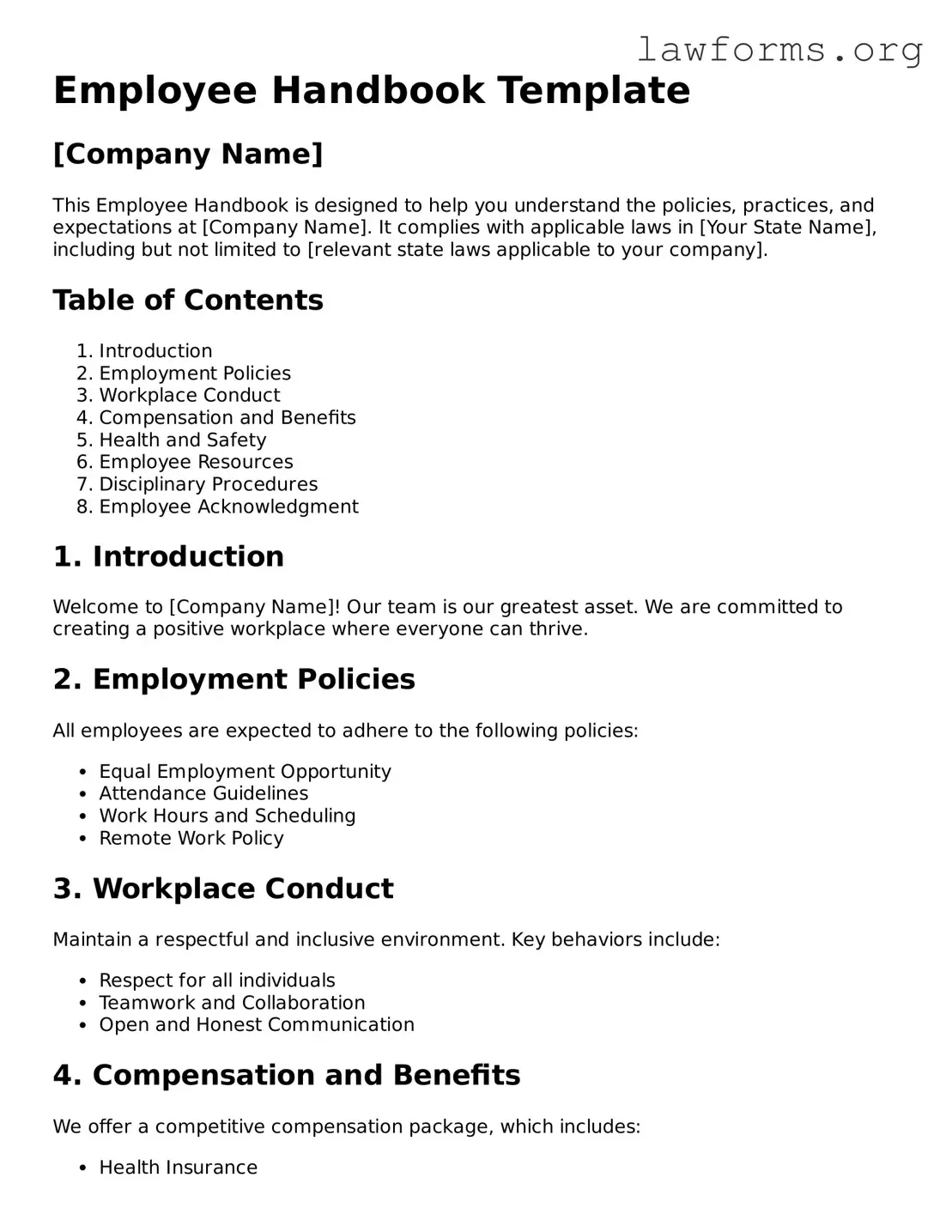Employee Handbook Template
[Company Name]
This Employee Handbook is designed to help you understand the policies, practices, and expectations at [Company Name]. It complies with applicable laws in [Your State Name], including but not limited to [relevant state laws applicable to your company].
Table of Contents
- Introduction
- Employment Policies
- Workplace Conduct
- Compensation and Benefits
- Health and Safety
- Employee Resources
- Disciplinary Procedures
- Employee Acknowledgment
1. Introduction
Welcome to [Company Name]! Our team is our greatest asset. We are committed to creating a positive workplace where everyone can thrive.
2. Employment Policies
All employees are expected to adhere to the following policies:
- Equal Employment Opportunity
- Attendance Guidelines
- Work Hours and Scheduling
- Remote Work Policy
3. Workplace Conduct
Maintain a respectful and inclusive environment. Key behaviors include:
- Respect for all individuals
- Teamwork and Collaboration
- Open and Honest Communication
4. Compensation and Benefits
We offer a competitive compensation package, which includes:
- Health Insurance
- Retirement Plans
- Paid Time Off
5. Health and Safety
Your safety is our priority. Adhere to our health and safety protocols, which include:
- Regular safety training
- Emergency response procedures
- Protocol for reporting unsafe conditions
6. Employee Resources
We provide various resources to support you, including:
- Employee Assistance Programs
- Mental Health Resources
- Training and Development Opportunities
7. Disciplinary Procedures
To maintain a healthy workplace, we have established procedures for dealing with misconduct. Potential outcomes may include:
- Verbal Warnings
- Written Warnings
- Termination
8. Employee Acknowledgment
By signing below, you acknowledge that you have read and understand the policies outlined in this handbook:
_______________________________________
[Employee Name]
_______________________________________
[Date]
